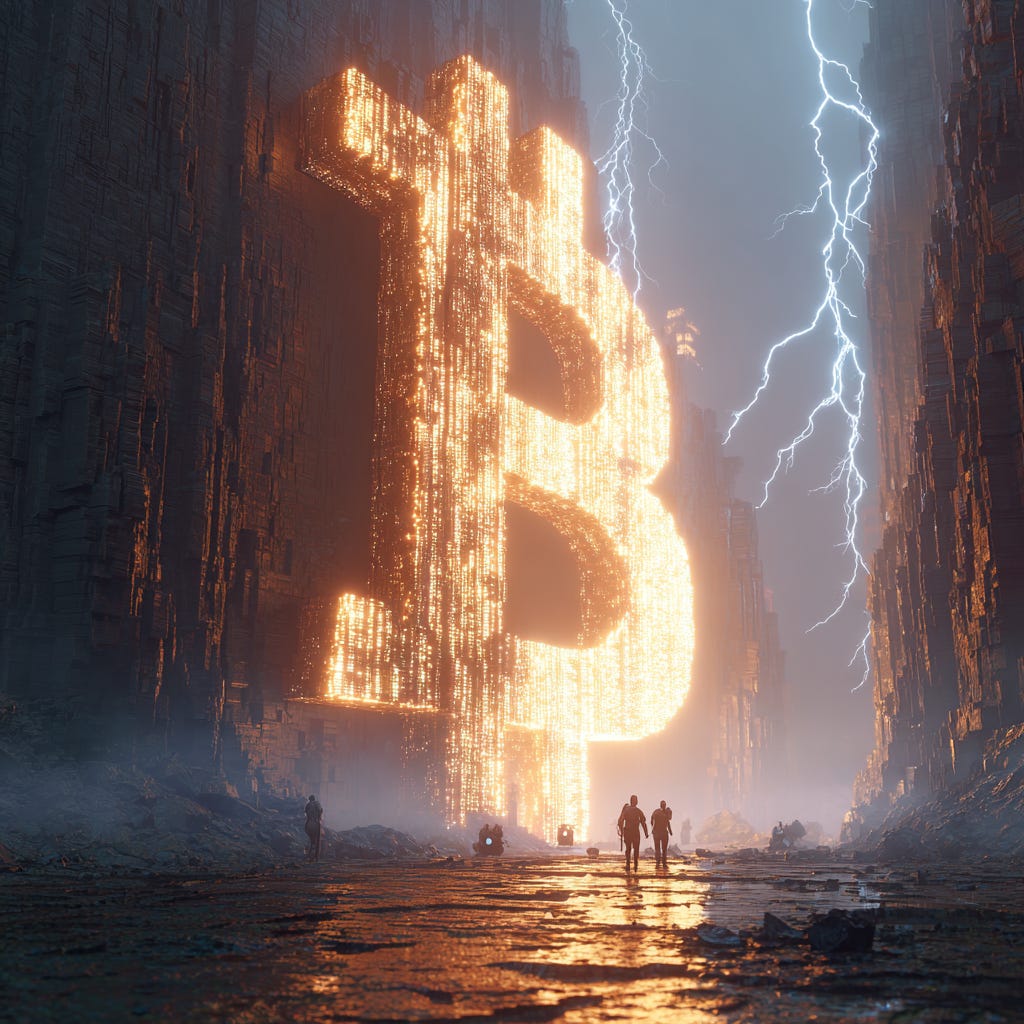Bitcoin Under the Hood, Part II
Proof of Work — Security Through Energy
In Part I, we explored how Bitcoin’s blockchain is like a shared ledger where every page (or “block”) is linked to the one before it, making it tamper-proof. But one big question remains: who gets to write the next page? And how do we make sure nobody cheats?
The answer is something called Proof of Work, and it’s one of Bitcoin’s most brilliant — and misunderstood — inventions.
The Lottery That Never Sleeps
Think of Bitcoin like a worldwide lottery that runs every ten minutes. Thousands of computers, known as miners, are racing to solve a puzzle. The puzzle isn’t about brains — it’s about luck. Each miner rolls digital dice over and over, billions of times per second, trying to hit a winning number.
When one miner finally succeeds, they earn the right to add the next block of transactions to the blockchain. As a reward, they receive newly created Bitcoin plus the transaction fees from that block. Then the race begins all over again.
This lottery is what we call Proof of Work.
Why Use So Much Energy?
Critics often say Bitcoin “wastes” energy. But here’s the key insight: the energy is what makes Bitcoin honest.
Because mining requires real-world electricity and hardware, it’s extremely expensive to cheat. To rewrite Bitcoin’s history, an attacker would need to redo all the puzzles from the past blocks — not just once, but faster than the rest of the honest network combined. The cost would be astronomical.
In other words, Bitcoin turns electricity into security. It makes fraud so costly that it’s not worth attempting.
A Digital Wall of Defense
Imagine you built a castle with walls so thick that no invader would ever think of attacking. That’s what Proof of Work does for Bitcoin. It makes the blockchain practically unbreakable.
This is why Bitcoin has never been hacked at the protocol level in its 16-year history — a track record no bank or tech company can match.
Difficulty Adjustment: Bitcoin’s Balancing Act
There’s one more clever twist. If miners add more computers to the race, Bitcoin automatically makes the puzzle harder. If miners quit and there are fewer computers, it makes the puzzle easier.
This “difficulty adjustment” keeps the system running smoothly, ensuring that a new block is found roughly every ten minutes, no matter how much computing power is out there. It’s like cruise control for the network.
Why It Matters
Proof of Work ensures that Bitcoin is trustless: you don’t need to trust banks, governments, or even other users. You just need to trust the math and the energy protecting the system.
This is what makes Bitcoin unique among all digital currencies — it’s not secured by promises or permissions, but by physics itself.
Coming Up Next: UTXOs and Transactions
Now that we’ve seen how Bitcoin keeps its ledger secure, it’s time to zoom in and look at the individual transactions themselves. How does Bitcoin actually “move” when you send it?
In Part III: UTXOs and Transactions — How Bitcoin Really Moves, we’ll explore how Bitcoin’s money system works differently from your bank account, why it’s more flexible, and how it preserves privacy.
Not financial or legal advice, for entertainment only, do your own homework. I hope you find this post useful as you chart your personal financial course and Build a Bitcoin Fortress in 2025.
Thanks for following my work. Always remember: freedom, health and positivity!
Please also check out my Bitcoin Fortress Podcast on all your favorite streaming platforms. I do a weekly Top Bitcoin News update every week on Sunday, focused on current items of interest to the Bitcoin community. Please check it out if you haven’t already. Also now on Fountain, where you can earn Bitcoin just for listening to your favorite podcasts.
Also, check out my books: Bitcoin Fortress: A Simple Guide to Bitcoin for Beginners and Bitcoin Retirement and Estate Planning
Follow me on Nostr:
npub122fpu8lwu2eu2zfmrymcfed9tfgeray5quj78jm6zavj78phnqdsu3v4h5
If you’re looking for more great Bitcoin signal, check out friend of the show Pleb Underground here.


